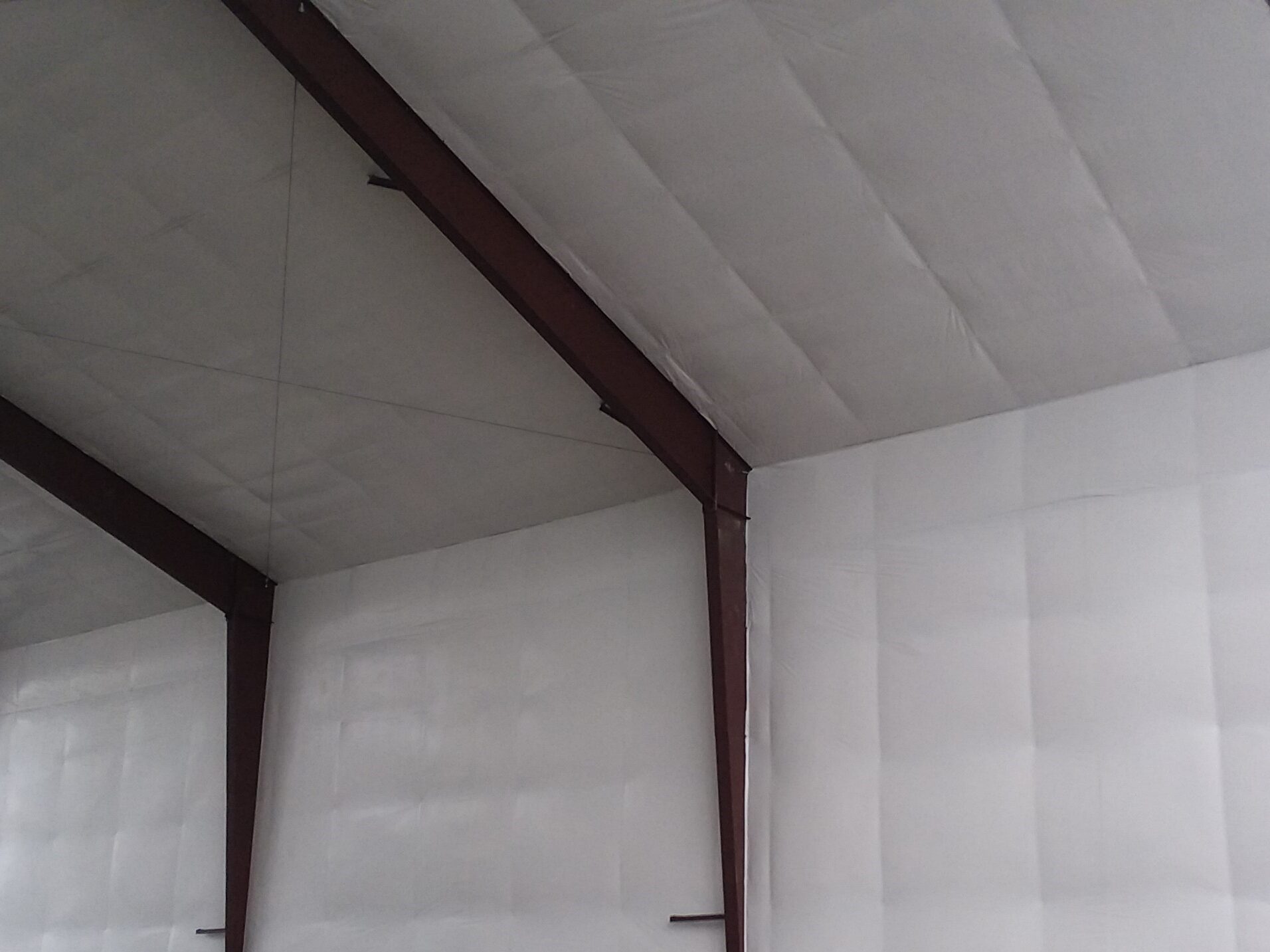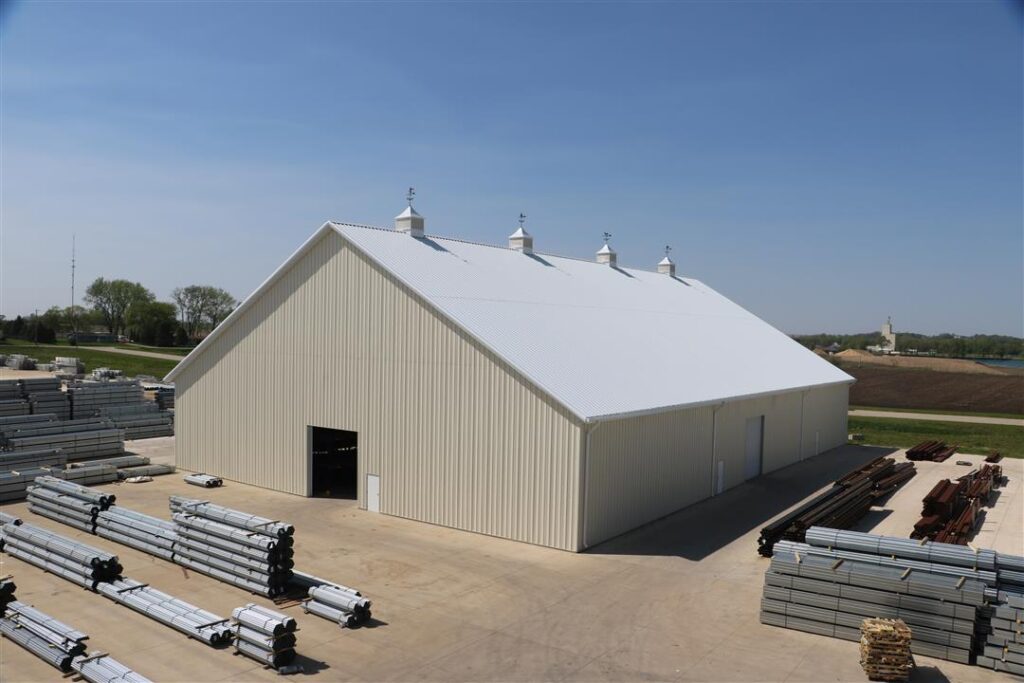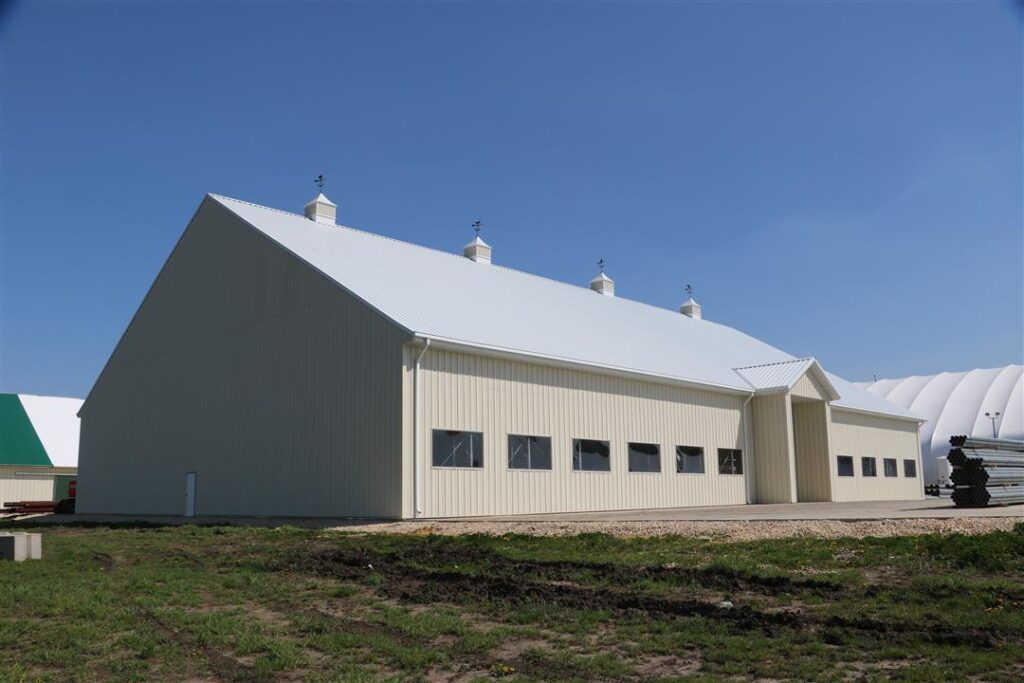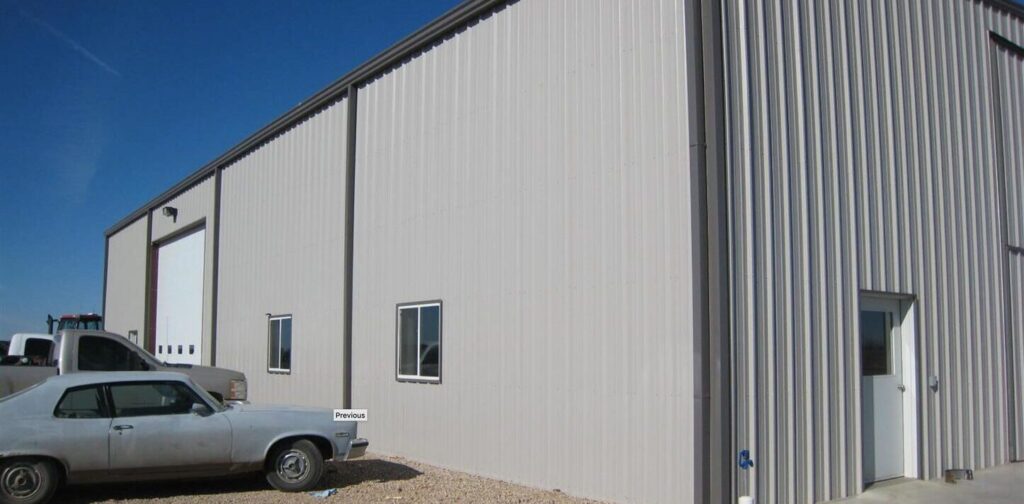Everything You Need To Know About Insulated Steel Buildings
Metal buildings offer businesses a durable, yet cost-efficient structural solution that can meet virtually any application. To maximize a steel structure’s lifespan and get the most out of their investment, while also creating a superior environment for any workers, guests or stored goods inside, operations should outfit their building with insulation.
Insulating materials work to resist heat flow, slowing the rate of conduction and convection that occurs naturally and impacts a structure’s interior climate. These materials are measured by their R-value, or thermal resistance, which determines how effective they will be when used to create insulated steel buildings.
With options available for any budget, climate and style of metal building out there, insulation is an element of building design that every operation should consider. By referencing this guide, businesses can learn more about the benefits offered by insulated steel buildings, and then determine the type of insulating material that is best suited to their needs.
Is It Worth Insulating A Metal Building?
Yes, insulation can provide a metal building with a variety of benefits, improving its longevity and producing a more comfortable interior. Additionally, it enables businesses to safely store most products, equipment and bulk material. Although not every metal structure will require insulation, insulated steel buildings are a valuable asset for any operation looking to save money over time.
Insulated steel buildings pair great with climate control systems and can make operations more energy-efficient. The insulation helps keep warm air out during the summer months, as well as keep it in throughout the winter, which allows businesses to run their heating and cooling systems far less. Subsequently, businesses should see a reduction in their monthly utility bill, and they can run a more sustainable operation.
Most insulation can also easily be equipped with a vapor barrier, helping prevent a buildup of condensation inside a structure. If condensation is able to collect on a steel wall or around a building’s connections, bolts and screws, it can cause significant long-term issues.

Not only does excess condensation lead to an enclosed, moist environment where mold and mildew can thrive, but it also poses a threat to a building’s structural integrity. Despite the fact that many metal structures are galvanized to protect against moisture and corrosion, it’s a good idea for operations to avoid this hazard entirely, so they can eliminate any potential rust and ensure their building lasts decades.
Along with supporting increased energy savings and a longer lifespan, insulated steel buildings are well-suited to noisier applications. Insulation can provide effective sound absorption, making it particularly useful for workshops or manufacturing facilities.
Sign up Now For More information
Common Types of Insulation For Insulated Steel Buildings
When operations are deciding on the type of insulation they should use, there are a number of insulation options for them to choose from. From more cost-effective fiberglass insulation to high-quality insulated metal panels, there’s a solution to fit every business’s needs.
Fiberglass Batt
For operations choosing ClearSpan’s insulated steel buildings, fiberglass batt insulation is one of the most popular choices. Although more economical, it still provides an attractive finish, and buildings can employ a combination of both faced and unfaced rolls to achieve higher R-values. Batt insulation can also be easily manipulated to fit within energy codes and specific installation practices. This material offers an R-value of around 7 in 2” thickness.
Insulated Metal Panels
Insulated Metal Panels, or IMP’s, are generally more expensive, but they offer exceptional R-value and are a great solution in states with stringent energy codes. When outfitted with IMP’s, insulated steel buildings gain a clean, attractive finish and require minimal long-term maintenance. In a 2” thickness, IMP’s can equip metal structures with an R-value of around 16, creating a well-sealed building that resists heat flow and stops air leaks.

Foam Board
Foam board, or rigid board, offers continuous insulation that reduces thermal bridging, wherein gaps create a path of least resistance for heat transfer to occur. Thermal bridging can be a significant source of heat loss, so having an insulation that negates this can help operations further save money. Foam board is relatively easy to install in insulated steel buildings, meets most building codes and should provide an R-value of around 12 in 2” thickness.
Spray Foam Insulation for metal buildings
Spray foam expands on contact, so it’s easy to install in even the tightest spaces, and operations can ensure their entire building is sealed. Businesses should opt for a closed-cell foam, which uses cells that are pressed together to prevent air and moisture from getting inside the insulation, making it more rigid and stable compared to an open-cell foam. Spray foam insulation can deliver an R-value of around 12 in 2” thickness, but it is more expensive than foam board, despite having similar thermal resistance.
There are several other types of insulating material that businesses can employ in their structure, like reflective bubble insulation or fabric liner systems, but these are four of the most common.


How Much Does Metal Building Insulation Cost?
Insulation prices can change depending on different factors, like location, building size and the type of insulation needed. The insulation options listed above have varying costs and come in a wide range of thicknesses, so operations will need to determine what R-value they need to regulate interior temperatures in their region.
Depending on an operation’s location and climate, different aspects of their insulated steel buildings may also need to change to allow any insulation to work as intended. Certain variables, like increasing purlin depth or changing to a standing seam roof to allow for thicker blankets of insulation to be draped over purlins, can lead to increased expenses.
Whatever the cost may be, insulation is not something operations should gloss over or choose hastily. This portion of building design can be crucial to both a structure’s performance and lifespan, and businesses will benefit greatly from ensuring it’s done right. By working with a reputable manufacturer, operations can choose their ideal type of metal building, and then have it insulated quickly and correctly.
Determining How Much Insulation You Need for a steel building
To estimate how much insulation an insulated steel building will need, operations can use the formulas below. These formulas require them to solve for the perimeter wall and roof area separately, and then to add the two numbers together to achieve a final square footage.
As an example, here are the formulas being used to calculate a metal building with the following dimensions: 80’W x 14’H x 100’L.
Perimeter Wall
80 + 80 + 100 + 100 = 360
360 x 14 = 5,040 sq. ft.
Roof
80 x 100 = 8,000 sq. ft.
Total
5,040 + 8,000 = 13,040 sq. ft.

The amount of insulation needed in this scenario is 13,040 sq. ft. It’s important to note that this does not pertain to every structure, as insulated steel buildings with higher roof pitches will need further considerations.
In most cases, outfitting a metal structure with insulation is crucial. After reading this guide, operations can make a more informed decision regarding their insulated steel buildings, getting a structure that is energy-efficient, prevents condensation and lasts decades into the future.
Looking at insulated steel buildings for your operation? Call or Request a Quote today to learn more.
Related Articles
Pre-Engineered Steel Buildings Should Be Your NExt Structural Solution
ClearSpan’s pre-engineered steel buildings provide operations with a structure that’s not simply just a quick fix, but that can also be a reliable long-term solution.
Avoid These Big Mistakes In Commercial Building Design
With how many factors contribute to an effective commercial building design, a number of operations end up making errors that impact the quality of their structure.
The Ultimate Guide To Metal Frame Buildings: Creating Your Steel Frame Structure
In this guide we’ll go over the basics, from common building components to designing a structure for peak efficiency, and make sense of the process to simplify the integration of a new steel frame structure into any facility.
Prefab Buildings: Why Operations Are Going With A Prefab Structure
Prefab buildings have emerged as a major player in the building market, offering businesses increased versatility and a variety of other unique benefits.

